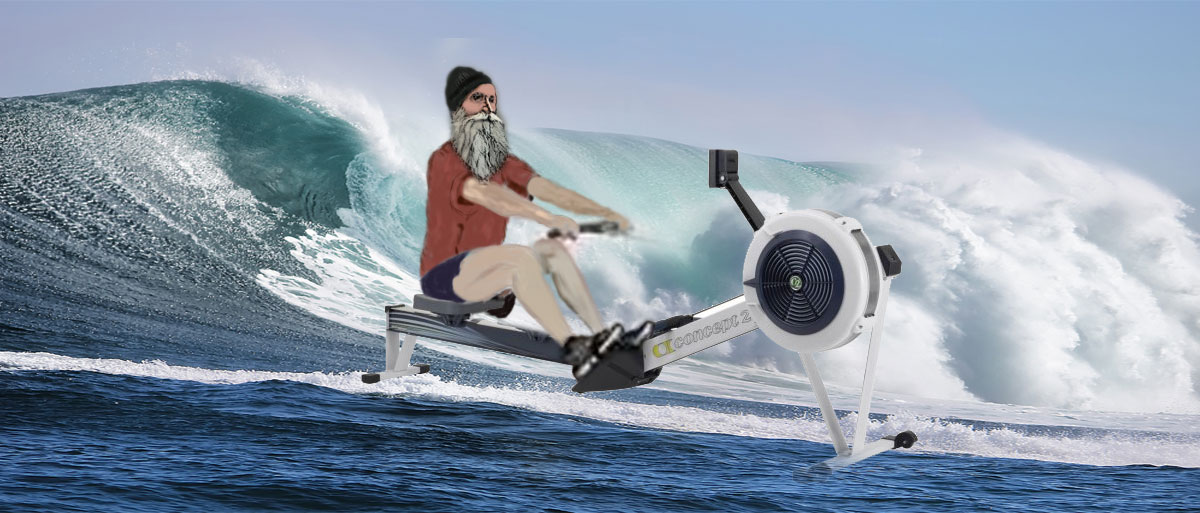
Last night and this morning there was a problem which consisted of higher than normal HR. Resting HR last night was more than 10 above normal. When today’s training session started, HR was proportionately too high at the beginning. But this has happened before and the cure in each previous instance has always been to row at an effort level that would elevate HR but to only row moderately.
So today’s training session wasn’t done as hard as the training details called for. And doing it at a moderate effort level was sufficient to speed up HR and keep it elevated long enough for it to slow down. By the time the 16K was finished, everything was back to normal rhythm. The image below which best demonstrates how rowing cured elevated HR is the one that shows a graph of Pace and HR per Stroke.
Today’s training session was five 2K intervals within a total of 16k. Plus 1250 meters total of warmup and warm down. It can be seen in the graph of effort level (pace) and HR that the effort level was about the same in all 5 of the 2K intervals, but HR slowed down from first to last.
Ordinarily – if the training session had been done as called for – HR would have climbed from the first 2K to the last.
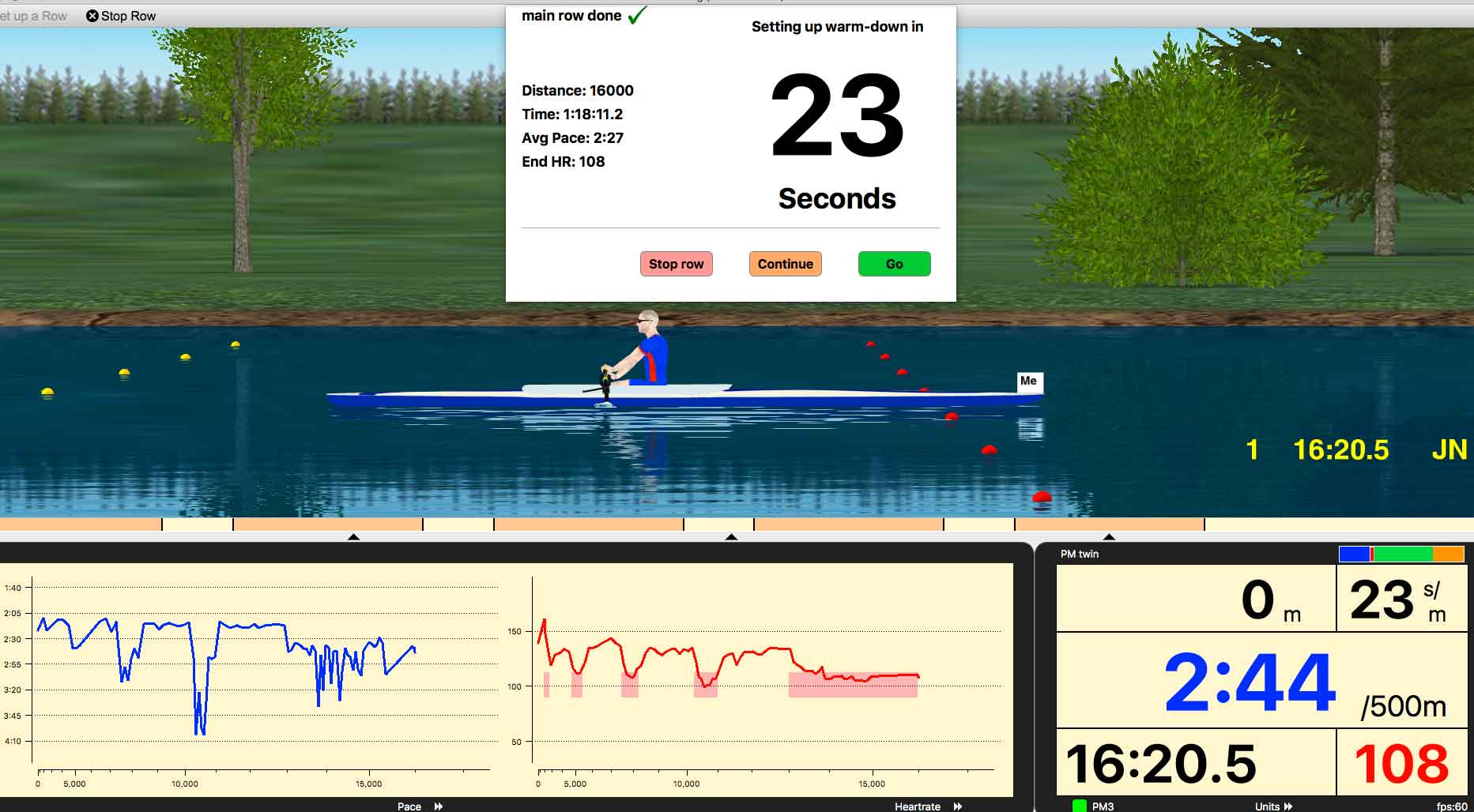
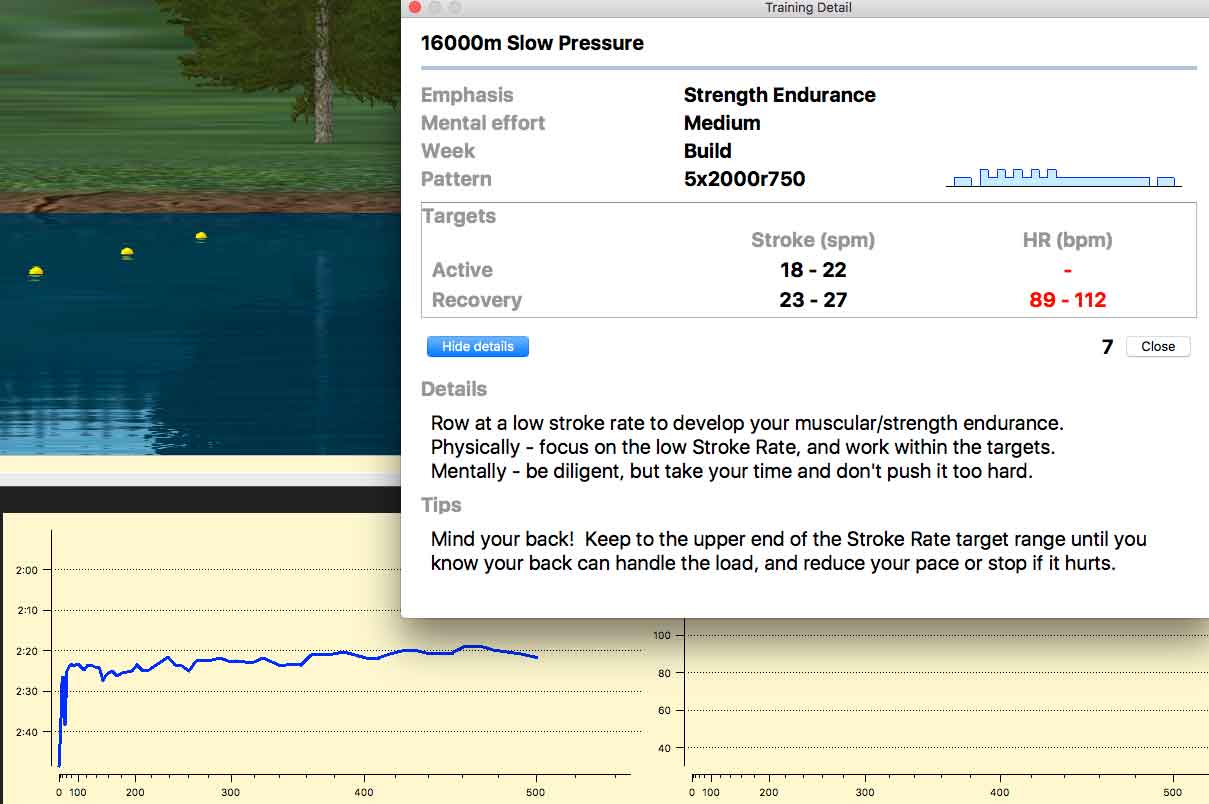
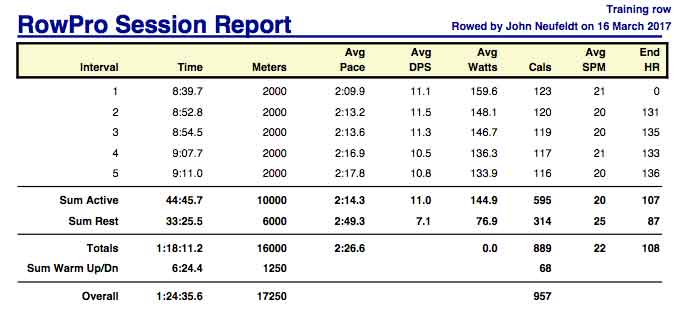
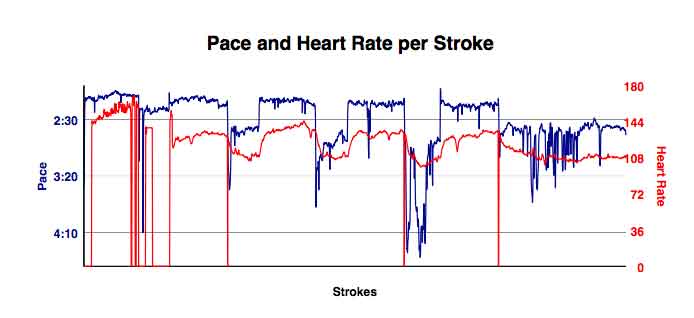
Happy rowing to you.
